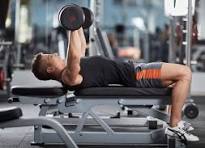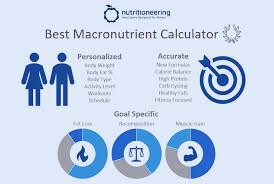Introduction
The chest press, a staple exercise in any strength training regimen, holds a revered position in the realm of fitness. Whether you’re a seasoned bodybuilder, an athlete striving for peak performance, or a fitness enthusiast looking to sculpt a stronger physique, the chest press is a fundamental movement that targets the muscles of the chest, shoulders, and arms. In this comprehensive guide, we delve deep into the intricacies of the chest press, exploring its variations, benefits, proper technique, and integration into workout routines.

Understanding the Chest Press: Anatomy and Muscles Targeted
Before delving into the technicalities of the chest press, it’s imperative to understand the anatomy and muscles involved. The primary muscles targeted during a chest press include:
- Pectoralis Major: The largest muscle in the chest, the pectoralis major, is responsible for horizontal adduction of the shoulder joint, bringing the arms across the chest.
- Anterior Deltoids: Located at the front of the shoulders, the anterior deltoids assist in shoulder flexion and horizontal shoulder adduction.
- Triceps Brachii: Situated at the back of the upper arm, the triceps brachii aids in elbow extension, playing a crucial role in pushing movements.
Benefits of Incorporating Chest Press into Your Workout Routine
- Muscle Growth and Strength: The chest press is renowned for its ability to stimulate muscle growth and enhance upper body strength. By targeting multiple muscle groups simultaneously, including the chest, shoulders, and triceps, it facilitates comprehensive upper body development.
- Functional Strength: The chest press mimics pushing movements commonly encountered in daily activities and sports, such as pushing open doors, lifting objects, or executing a powerful volleyball spike.
- Improved Athletic Performance: Athletes across various disciplines, from football players to swimmers, can benefit from the increased upper body strength and power derived from consistent chest press training.
- Enhanced Bone Health: Resistance training exercises like the chest press contribute to the maintenance of bone density, reducing the risk of osteoporosis and fractures, especially in older adults.
- Metabolic Boost: Compound exercises like the chest press elevate metabolic rate both during and after the workout, promoting calorie burn and aiding in weight management.
Variations of the Chest Press
- Barbell Bench Press: The classic barbell bench press involves lying on a flat bench and pressing a barbell upwards until the arms are fully extended. It’s a foundational strength-building exercise that allows for heavy loading.
- Dumbbell Bench Press: Similar to the barbell bench press, the dumbbell bench press offers greater freedom of movement and requires increased stabilization due to the independent movement of each arm.
- Incline Bench Press: Performing the chest press on an inclined bench targets the upper chest more intensely, contributing to a well-rounded chest development.
- Decline Bench Press: Conversely, the decline bench press involves a decline angle, emphasizing the lower portion of the chest.
- Machine Chest Press: Machine-based chest presses provide a guided movement pattern, making them suitable for beginners or individuals recovering from injury.
Proper Technique for Performing the Chest Press
- Setup: Begin by lying on a flat, incline, or decline bench with your feet planted firmly on the ground. Ensure your back, shoulders, and head are in contact with the bench throughout the movement.
- Grip: Grasp the barbell or dumbbells with an overhand grip slightly wider than shoulder-width apart. Maintain a firm grip throughout the exercise.
- Positioning: Lower the weight under control until it reaches chest level, keeping your elbows at approximately 45 degrees to your body.
- Execution: Exhale as you push the weight upwards in a controlled manner, extending your arms fully without locking out the elbows. Focus on squeezing the chest muscles at the top of the movement.
- Return: Inhale as you lower the weight back to the starting position, maintaining control and avoiding bouncing the weight off your chest.
Common Mistakes to Avoid
- Excessive Arching: Avoid excessive arching of the back, which can lead to lower back strain and compromise proper form. Maintain a slight natural arch in the lower back throughout the exercise.
- Rounded Shoulders: Keep your shoulders retracted and depressed throughout the movement to minimize stress on the shoulder joints and maximize chest activation.
- Incomplete Range of Motion: Ensure you lower the weight until it touches your chest without bouncing, and fully extend your arms at the top of the movement to maximize muscle activation and growth.
- Gripping Too Narrow: Gripping the barbell or dumbbells too narrowly can place undue stress on the wrists and elbows. Opt for a grip width that allows for optimal chest engagement without discomfort.
- Lack of Control: Maintain control over the weight throughout the entire range of motion, avoiding rapid or jerky movements that can increase the risk of injury.
Incorporating the Chest Press into Your Workout Routine
- Frequency: Aim to incorporate the chest press or its variations into your workout routine 1-3 times per week, depending on your training goals and overall program.
- Volume and Intensity: Adjust the volume (sets and repetitions) and intensity (weight lifted) based on your experience level, with beginners starting with lighter weights and higher repetitions and progressing to heavier loads as they advance.
- Supplementary Exercises: Pair the chest press with complementary exercises targeting different muscle groups, such as rows, pull-ups, and shoulder presses, to ensure balanced muscle development and prevent muscular imbalances.
- Periodization: Implement periodization techniques by varying the rep ranges, intensity, and exercises to prevent plateaus and promote continual progress.
- Rest and Recovery: Allow adequate rest between chest press sessions to facilitate muscle recovery and growth. Listen to your body and adjust the frequency and intensity as needed to avoid overtraining.
Conclusion
The chest press stands as a cornerstone exercise in the realm of strength training, offering a myriad of benefits ranging from muscle growth and strength gains to improved athletic performance and functional strength. By understanding its variations, mastering proper technique, and integrating it strategically into your workout routine, you can unlock the full potential of the chest press and embark on a journey towards a stronger, more sculpted physique. Whether you’re a beginner or a seasoned lifter, the chest press remains an indispensable tool in your fitness arsenal, propelling you towards your fitness goals with each rep and set.





